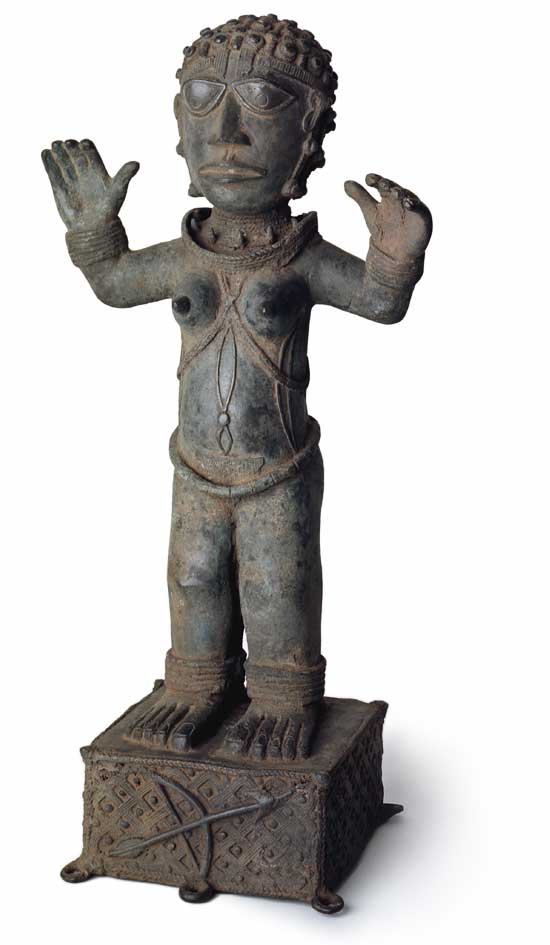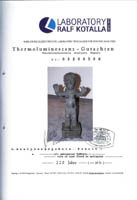Galerie Peter Herrmann |
- | Ancient Art from Africa |
||
 |
| Female figure | Thermoluminescence-Report |
| Benin, Nigeria + - 1780 57,5 cm |
 |
| Description |
Standing figures can often be found amongst objects from Benin, most often depicting the Oba and his attendants. Standing female figures, however, are quite rare. Stylistically, this one differs somewhat from most objects from Benin. The hairstyle, body jewellery and form of the legs are hard to classify; only the neck jewellery and forehead scars indicate that this object stems from Benin's casting tradition. According to William Fagg, the base and body are typical of objects created during the transition phase between Benin's middle and late periods. And in fact, the style of the head is more reminiscent of the Yoruba and the bronze workshops along the lower Niger. Nonetheless, the division into early, middle and late periods must, however, be amended, especially if one believes, as we do, in the existence of an 1,000-year-old tradition. As far as identification goes, this figure could, theoretically, depict any of the women in the king's harem. The latest research, however, suggests a more positive identification based on the notable bow and arrow ornamentation that recurs on the base. Bow and arrow were attributes of Ake, the god of archery. It follows that the naked woman with bow and arrow represents his wife, who, after her death, was also declared a goddess. Cp.: |
| Similar objects | Illustration |
Staatliche Museen zu Berlin, Ethnologisches Museum
|
Felix von LUSCHAN: Die Altertümer von Benin, Band 1-3, Berlin 1919, Tafel 70. |
Tom Phillips (Hg.): Afrika. Die Kunst eines Kontinents. München 1996, S. 399. |
William B. FAGG: Bildwerke aus Nigeria, München 1963, S. 68. |
| Museum für Völkerkunde Wien, Slg. G. Haas | Hans-Joachim Koloss (Hg.): Afrika, Kunst und Kultur. Meisterwerke afrikanischer Kunst. Museum für Völkerkunde Berlin, München 1999, S. 47. |
Barbara PLANKENSTEINER (Hg.): Benin. Könige und Rituale. Höfische Kunst aus Nigeria, Wien 2007, S. 438. |